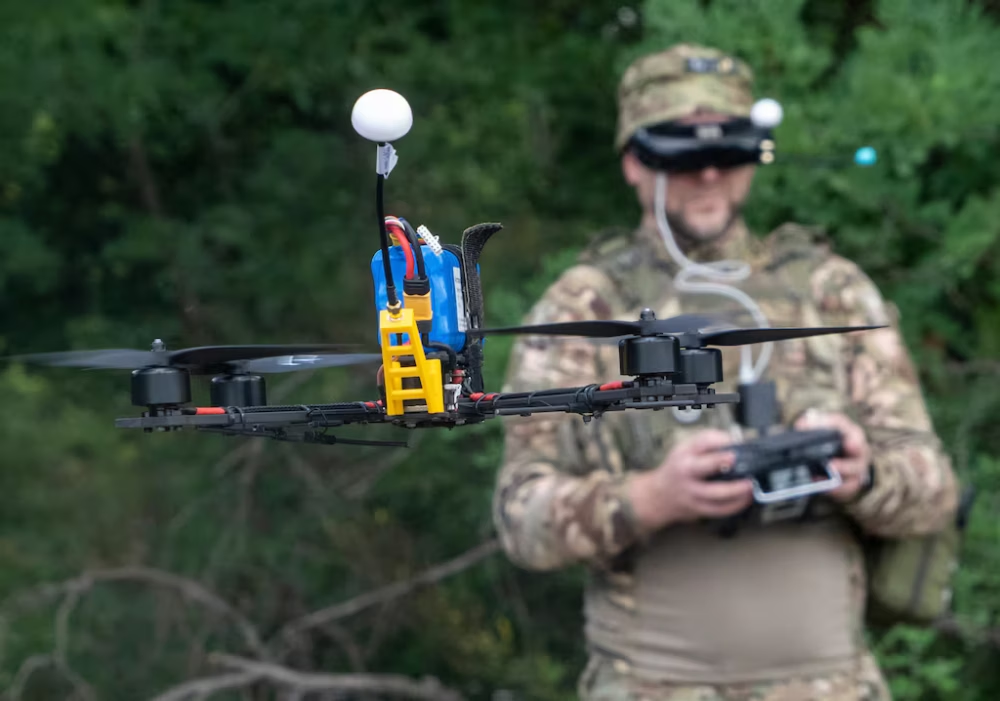By Mickey Miller, CEO, Vislink
As I followed President Zelenskyy’s recent remarks to the United Nations – especially his framing of the challenge as not just Ukraine’s war, but a turning point for European security architecture – it seems clear that a deeper shift is underway. (Full text of his speech here.)
Below, I share my take on how Ukraine’s potential decision to ease its arms-export restrictions could become a foundational moment in forging a stronger, more integrated European defense ecosystem.
From Embargo to Partnership: A New Defense Paradigm
For much of the past three years, Ukraine’s arms export ban has been a practical necessity – ensuring all production is directed to the front lines. But now, the conversation is evolving. Kyiv is reportedly considering a calibrated approach: controlled exports or joint manufacturing in Europe, particularly in sectors like unmanned aerial systems, where Ukraine already holds battlefield-proven capabilities.
One proposal under discussion suggests that during the conflict, all output remains in Ukraine, with surplus output only shared once stability returns. Some versions contemplate a 50/50 split with European partners post-conflict.
That model, to me, signals a move from donor-recipient to equal collaborator – turning Ukraine into an industrial anchor, not just a front-line combatant.

A Ukrainian serviceman of 57th motorised brigade controls an FPV drone at the frontline in Kharkiv region, Ukraine, on Aug. 12, 2025. (AP Photo/Andrii Marienko)
Why This Matters – And Why Timing Is Right
I believe this moment is ripe for a few reasons:
- Demand Gap in Europe
Many European nations still struggle to source advanced drone systems and counter-drone technologies at scale. Ukraine’s rapid innovation – tested under fire – offers a rare opportunity to bridge that gap. - Capital, Not Just Aid
Exporting or co-producing arms provides revenue streams that reinforce Ukraine’s industrial base, rather than perpetually relying on external subsidies or gifts. - Strategic Alignment, Not Political Overtones
By structuring partnerships with guardrails, Europe and Ukraine can cooperate on defense capabilities without descending into geopolitical posturing. The narrative becomes “joint security,” not “arms race. - Global Significance & Zelenskyy’s Vision
In his UN address, President Zelenskyy warned we are living through the “most destructive arms race in human history.” His refrain: this isn’t a Ukrainian problem alone – this is a test for global norms around AI, autonomy, drone warfare, and allied coordination.
When a leader speaks from that vantage, he’s pointing toward systemic transformation — and I take that as an invitation to act, not just observe.
How We at Vislink Can Help
From our vantage point in high-reliability communications, surveillance and data fusion systems, we already find ourselves collaborating with defense companies across Europe. I believe Vislink can play a connective role in:
- Enabling secure, resilient communication links between different systems and platforms
- Adapting interoperable standards to facilitate joint design, data sharing, and logistics
- Piloting prototype programs that span borders – demonstrating that trust and integration can move faster than fragmentation
I approach this not as wishful thinking, but as a roadmap achievable through deliberate steps and mutual respect.
A Forward-Looking Call
I don’t pretend to know every detail of Ukraine’s final policy choices. But what I do see clearly is that this moment offers a generational opportunity: to reimagine European and worldwide defense as truly transnational, where innovation and industrial capacity are more evenly distributed and mutually reinforcing.
If structured wisely and with transparency, Ukraine’s move to lift parts of its arms ban could turn a wartime imperative into a lasting foundation for collective security. I look forward to supporting this transition, and to engaging with partners that share that vision.